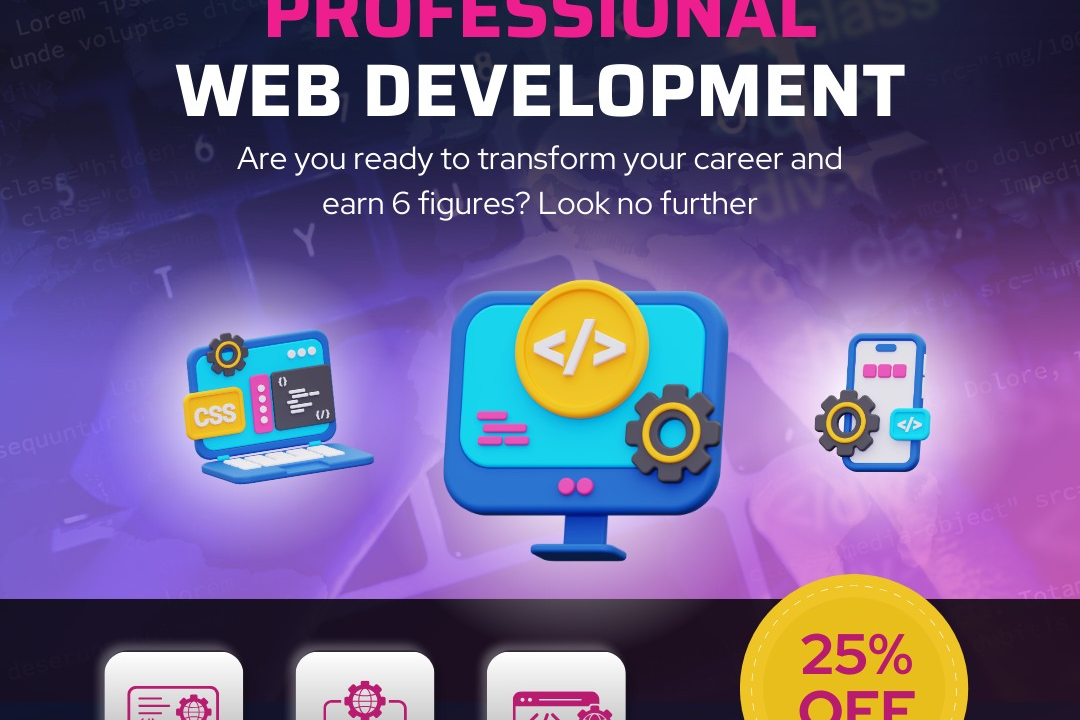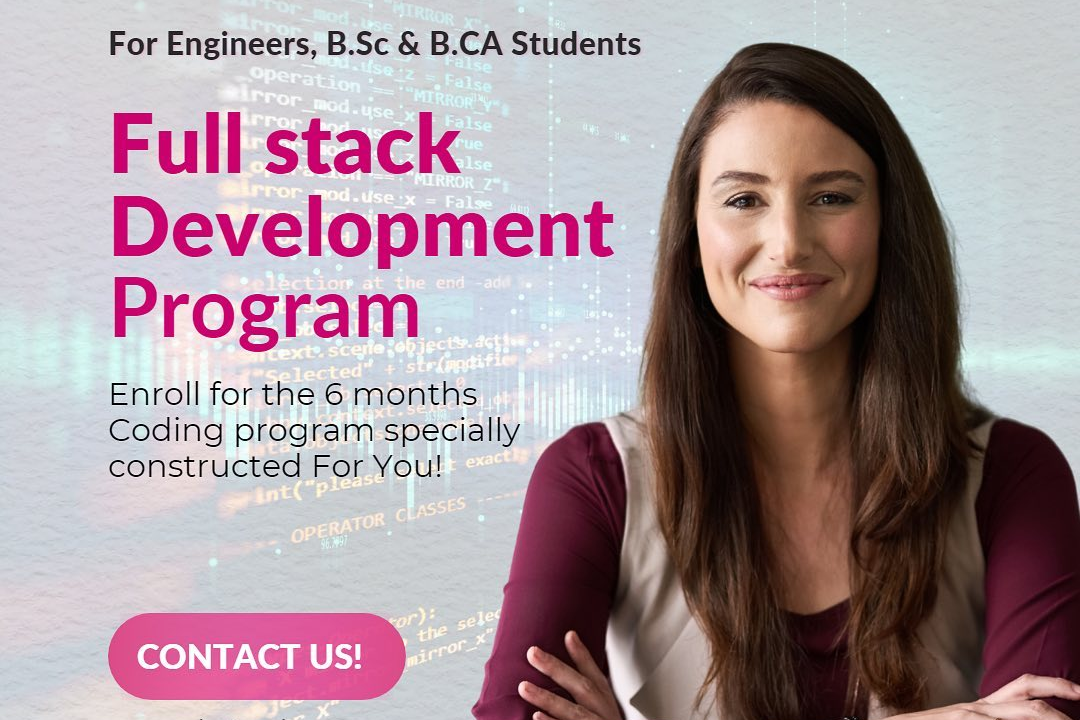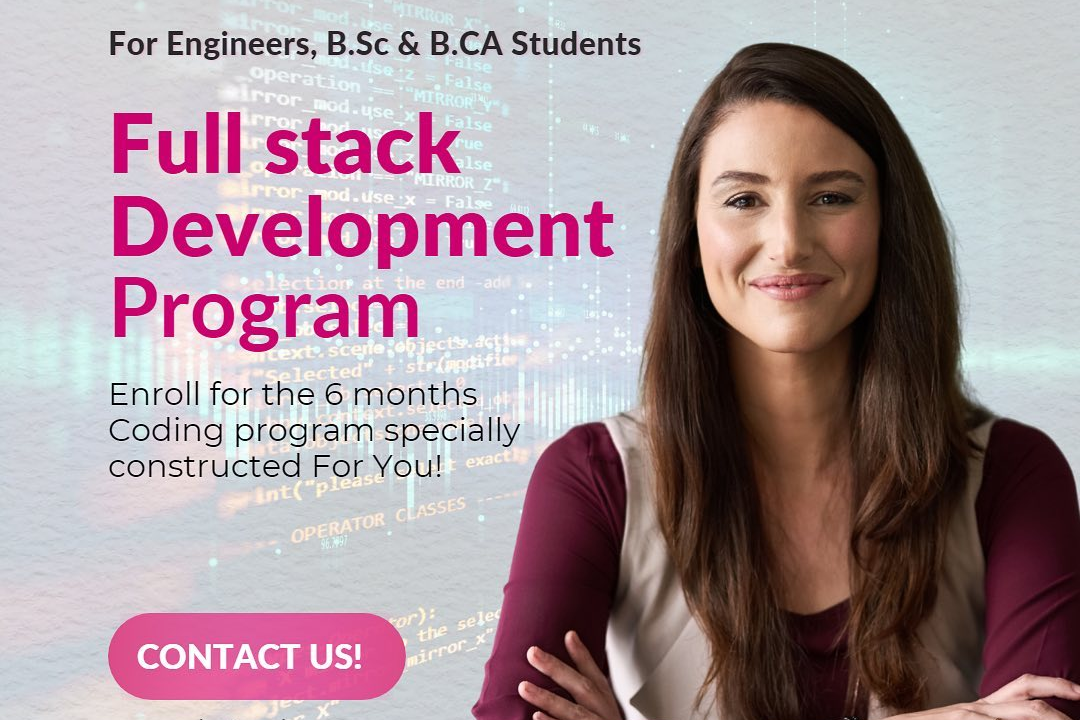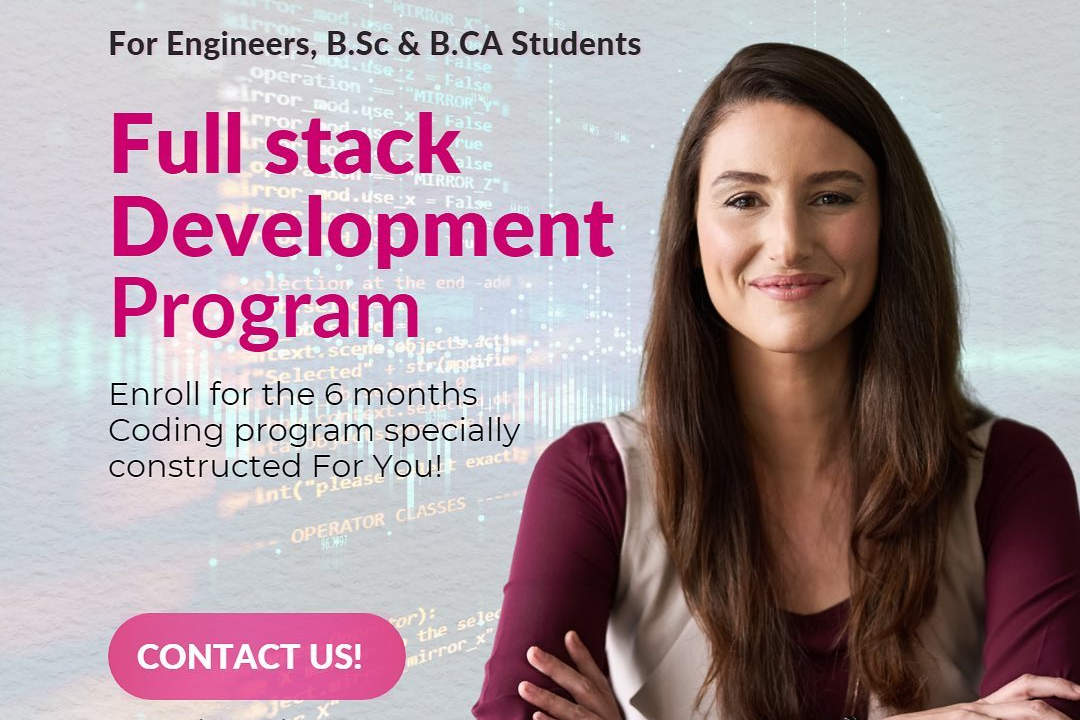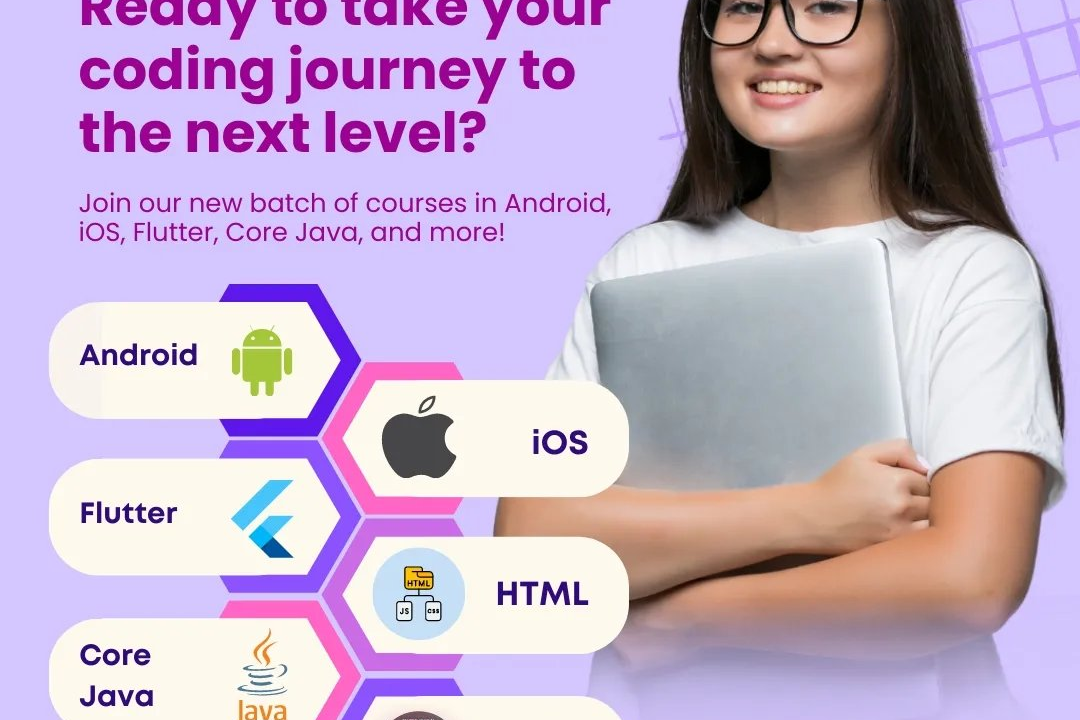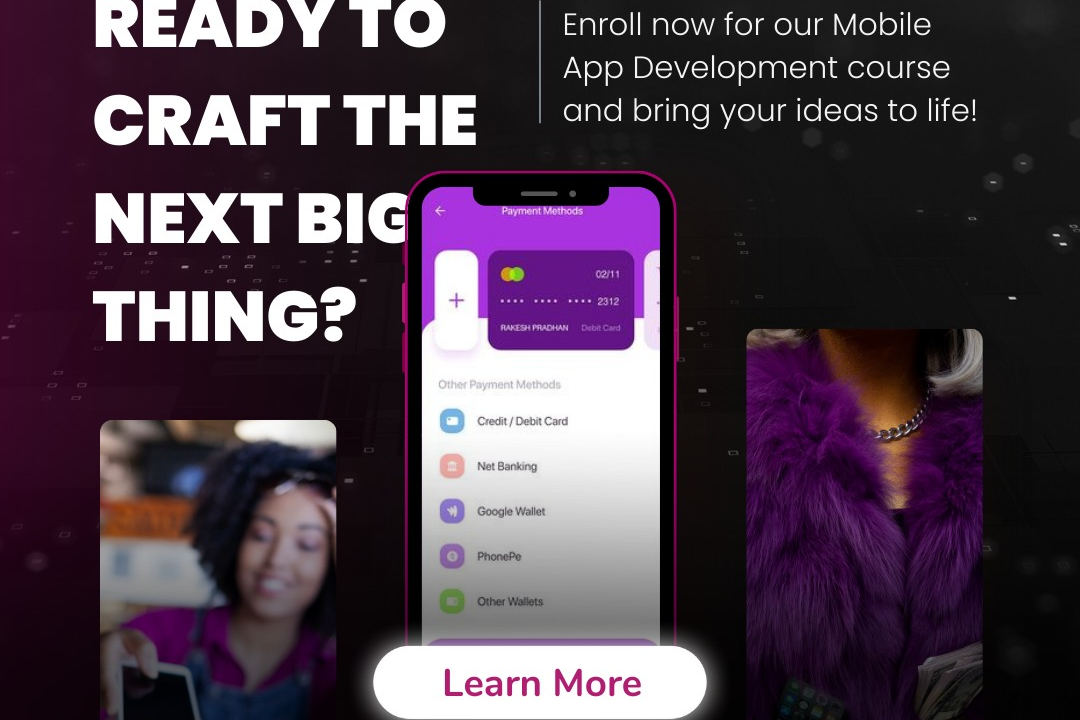Hover Menue Based Full Php Program
A hover menu based full PHP program is a dynamic navigation system that uses PHP scripting to genera
Hover Menue Based Full Php Program
A hover menu based full PHP program is a dynamic and interactive navigation solution that enhances user experience by providing easy access to various website sections through dropdown menus activated on mouse hover. Utilizing PHP for generating the menu structure allows for dynamic updates and easy management of menu items, especially when dealing with large or frequently changing websites. This approach not only improves site organization and accessibility but also offers a visually appealing and intuitive interface, making it easier for visitors to explore the website efficiently.
To Download Our Brochure: https://www.justacademy.co/download-brochure-for-free
Message us for more information: +91 9987184296
A hover menu based full PHP program is a dynamic and interactive navigation solution that enhances user experience by providing easy access to various website sections through dropdown menus activated on mouse hover. Utilizing PHP for generating the menu structure allows for dynamic updates and easy management of menu items, especially when dealing with large or frequently changing websites. This approach not only improves site organization and accessibility but also offers a visually appealing and intuitive interface, making it easier for visitors to explore the website efficiently.
Course Overview
The ‘Hover Menu Based Full PHP Program’ course teaches how to create dynamic, interactive navigation menus using PHP and CSS, focusing on designing responsive, user-friendly hover dropdowns for websites.
Course Description
Learn to build interactive hover menu systems using PHP and CSS, enabling the creation of dynamic, responsive navigation menus for modern websites with ease.
Key Features
1 - Comprehensive Tool Coverage: Provides hands-on training with a range of industry-standard testing tools, including Selenium, JIRA, LoadRunner, and TestRail.
2) Practical Exercises: Features real-world exercises and case studies to apply tools in various testing scenarios.
3) Interactive Learning: Includes interactive sessions with industry experts for personalized feedback and guidance.
4) Detailed Tutorials: Offers extensive tutorials and documentation on tool functionalities and best practices.
5) Advanced Techniques: Covers both fundamental and advanced techniques for using testing tools effectively.
6) Data Visualization: Integrates tools for visualizing test metrics and results, enhancing data interpretation and decision-making.
7) Tool Integration: Teaches how to integrate testing tools into the software development lifecycle for streamlined workflows.
8) Project-Based Learning: Focuses on project-based learning to build practical skills and create a portfolio of completed tasks.
9) Career Support: Provides resources and support for applying learned skills to real-world job scenarios, including resume building and interview preparation.
10) Up-to-Date Content: Ensures that course materials reflect the latest industry standards and tool updates.
Benefits of taking our course
Functional Tools
1 - Adobe Visual Studio Code: This lightweight but powerful source code editor is used for writing, editing, and debugging PHP, HTML, CSS, and JavaScript code. Its customizable interface, integrated terminal, and extensive plugin support make it ideal for developing complex hover menu programs. Students learn to utilize features like syntax highlighting, code completion, and version control integration to enhance their coding efficiency and maintain clean, manageable codebases. This tool helps students streamline their development process, allowing them to focus on logic and design aspects of the hover menu without distractions. By mastering VS Code, students gain practical skills that are directly applicable to real world web development projects.
2) XAMPP/WAMP Server: These are local server environments that allow students to run PHP scripts and test web pages on their personal computers. They simulate a live server environment, enabling real time testing of dynamic hover menu features without needing an internet server. Students get hands on experience configuring server settings, managing databases if needed, and troubleshooting server side issues. Understanding how to set up and operate such environments prepares students for deployment scenarios, ensuring smooth transition from development to production phases.
3) MySQL Database: Used in conjunction with PHP scripts to store and retrieve menu configurations, user preferences, or content dynamically. Students learn database design, SQL query writing, and data management, which are crucial for creating customizable and scalable hover menus. Integrating databases into their projects enhances the interactivity and personalization capabilities of web menus, making websites more user centric. Practical exercises demonstrate how PHP interacts with MySQL to fetch, display, and update data seamlessly within the hover menu structure.
4) PHP Programming Language: Core to the course, PHP empowers students to develop server side logic for hover menus that dynamically load data, handle user interactions, and maintain menu states. Students explore PHP syntax, functions, form handling, session management, and security practices. This language enables creating fully functional, secure, and efficient backend processes that support interactive front end features, allowing for a robust full PHP program. Emphasis on real world coding practices helps students understand how PHP integrates with HTML, CSS, and JavaScript.
5) HTML5 & CSS3: These markup and style sheet languages are fundamental for structuring and styling the hover menus. Students learn how to write semantic HTML for menu markup, ensuring accessibility and SEO benefits. CSS3 techniques are used to craft visually appealing hover effects, transitions, and responsive layouts. Combining HTML and CSS enhances the aesthetic appeal and functionality of menus, enabling students to design with both form and function in mind. These skills form the basis of creating engaging and user friendly navigation systems.
6) JavaScript & jQuery: Essential for adding client side interactivity, JavaScript and jQuery provide dynamic effects for hover menus like animations, fade ins, and slide effects. Students learn to write scripts that respond to mouse events, enhance usability, and improve user experience. jQuery simplifies JavaScript coding, making it more accessible for beginners to implement complex interactions easily. Mastery over these tools allows students to create smooth, responsive, and visually appealing menu transitions that are crucial for modern web design.
7) Bootstrap Framework: This popular front end framework offers pre designed components and responsive grid systems that expedite the development of sleek and mobile friendly hover menus. Students explore how to leverage Bootstrap classes and JavaScript plugins to implement hover effects and dropdown menus with minimal custom code. Using Bootstrap ensures cross browser compatibility and a consistent look across devices, saving development time while maintaining professional standards. This tool trains students in responsive design principles critical for today’s multi device environment.
8) Version Control Tools (Git): An essential component for collaborative development, Git allows students to track changes, manage project versions, and collaborate efficiently with peers. They learn commands to initialize repositories, commit changes, resolve conflicts, and push updates to remote repositories like GitHub. Version control encourages organized workflow and offers safety nets during development, preventing data loss and enabling easy rollback. Mastering Git prepares students for professional development environments where team collaboration and code management are standard.
9) DevTools / Browser Inspectors: Built in development tools in browsers like Chrome or Firefox enable students to debug and test front end code directly. They inspect elements, analyze CSS rules, and view JavaScript console outputs to troubleshoot hover menu issues in real time. These tools facilitate understanding how code affects webpage rendering and behavior, optimizing performance and compatibility. Skill in using DevTools ensures that students can quickly identify problems and fine tune their hover menus for optimal user experience across various browsers and devices.
10) CSS Preprocessors (Optional): Tools like SASS or LESS may be introduced to write modular, maintainable CSS code with variables, nesting, and mixins. These preprocessors simplify managing large style sheets involved in hover menu designs, making future updates easier and more efficient. By utilizing preprocessor features, students develop better organization and consistency in styling complex menus, leading to professional, scalable projects. This knowledge enhances their front end development skill set, preparing them for advanced styling techniques in real world projects.
11 - Responsive Design Techniques: Students learn to make hover menus adaptable to various screen sizes and devices using media queries and flexible grid systems. This ensures a seamless user experience whether on desktops, tablets, or smartphones, which is crucial in today's mobile first web landscape. They gain practical skills in designing fluid and flexible menus that maintain functionality and aesthetics across all devices, enhancing their capability to develop universally accessible websites.
12) Accessibility Standards and ARIA Roles: Training emphasizes creating accessible hover menus that comply with WCAG guidelines, including proper ARIA labeling and keyboard navigation support. Students understand the importance of inclusive design, ensuring that menus are usable by users with disabilities. Implementing accessible features broadens their skill set to develop equitable websites that cater to a diverse audience, meeting statutory and ethical standards.
13) Cross Browser Compatibility Testing: Students learn to test hover menu functionality across multiple browsers like Chrome, Firefox, Edge, and Safari. They identify and fix inconsistencies, ensuring a uniform experience for all users. Mastering this process enhances their troubleshooting skills and prepares them for real world deployment where browser diversity impacts usability.
14) Animation and Transition Effects: The course delves into CSS animations and transitions to create engaging hover effects such as sliding, fading, or scaling menus. Students design visually appealing interactions that improve user engagement and perceived performance. Gaining proficiency in animations helps in elevating the overall aesthetic quality of navigation components.
15) Performance Optimization: Students examine techniques such as minimizing CSS/JavaScript files, leveraging lazy loading, and minimizing reflows to enhance menu load times and responsiveness. Understanding performance best practices ensures their hover menus are not only functional but also efficient, reducing bounce rates and improving SEO rankings.
16) Security Best Practices in Web Development: As part of comprehensive project development, students learn about preventing common security vulnerabilities like Cross Site Scripting (XSS) and SQL injection when handling user inputs within hover menus. This knowledge ensures the safety of dynamic menus handling sensitive data or user authentication.
17) Integration with Content Management Systems (CMS): The course explores embedding hover menus into popular platforms like WordPress, Joomla, or Drupal. Students learn how to develop customizable menus that can be managed via CMS backends, adding practical value for real world website management.
18) Workflow Automation Tools: Introducing task runners like Gulp or Webpack, students automate repetitive tasks such as minification, compilation, and testing. This enhances their development efficiency and prepares them for modern DevOps practices, which are crucial in scaling professional projects.
19) Project Management & Documentation Skills: Beyond technical expertise, students are trained to document their code, create project planning sheets, and follow Agile methodologies. Effective project management ensures timely delivery and maintainability of hover menu projects, mirroring industry standards.
20) Certification & Portfolio Development Support: The program guides students to build a professional portfolio demonstrating their hover menu projects, equipping them with tangible proof of their skills. They are also prepared to earn official certifications, boosting their employability and freelancing prospects in web development.
21 - Real Time Collaboration Platforms: Exposure to tools like GitHub, GitLab, or Bitbucket enables students to collaborate on hover menu projects, simulate team workflows, and participate in code reviews. This collaboration experience reflects real world software development environments, fostering teamwork and communication skills.
22) Continuous Learning & Industry Trends: The course emphasizes staying updated with latest CSS/JavaScript frameworks, new browser features, and emerging web standards. Students cultivate a mindset of continuous improvement, essential for adapting to the ever evolving digital landscape.
23) Custom Plugin and Extension Development: Advanced learners explore creating custom JavaScript plugins or CSS extensions for hover menus, opening avenues for personalized functionalities or third party integrations. This skill enhances their ability to tailor solutions to specific client needs or project requirements.
24) Entrepreneurial and Freelance Skills: Insights into how to market their hover menu development services, set appropriate pricing, and manage client relationships prepare students for independent consulting or freelancing careers in web development.
25) Industry Case Studies & Best Practices: Throughout the course, students analyze real world examples of innovative hover menus in popular websites, understanding design choices, technical implementations, and user feedback, fostering a pragmatic understanding of effective navigation systems.
Browse our course links : https://www.justacademy.co/all-courses
To Join our FREE DEMO Session:
This information is sourced from JustAcademy
Contact Info:
Roshan Chaturvedi
Message us on Whatsapp:
Email id: info@justacademy.co
Automated Testing Tools Selenium Courses Offering Institutes
Cache Http Cs-Fundamentals.Com Java-Programming Java-Primitive-Data-Types.Php



